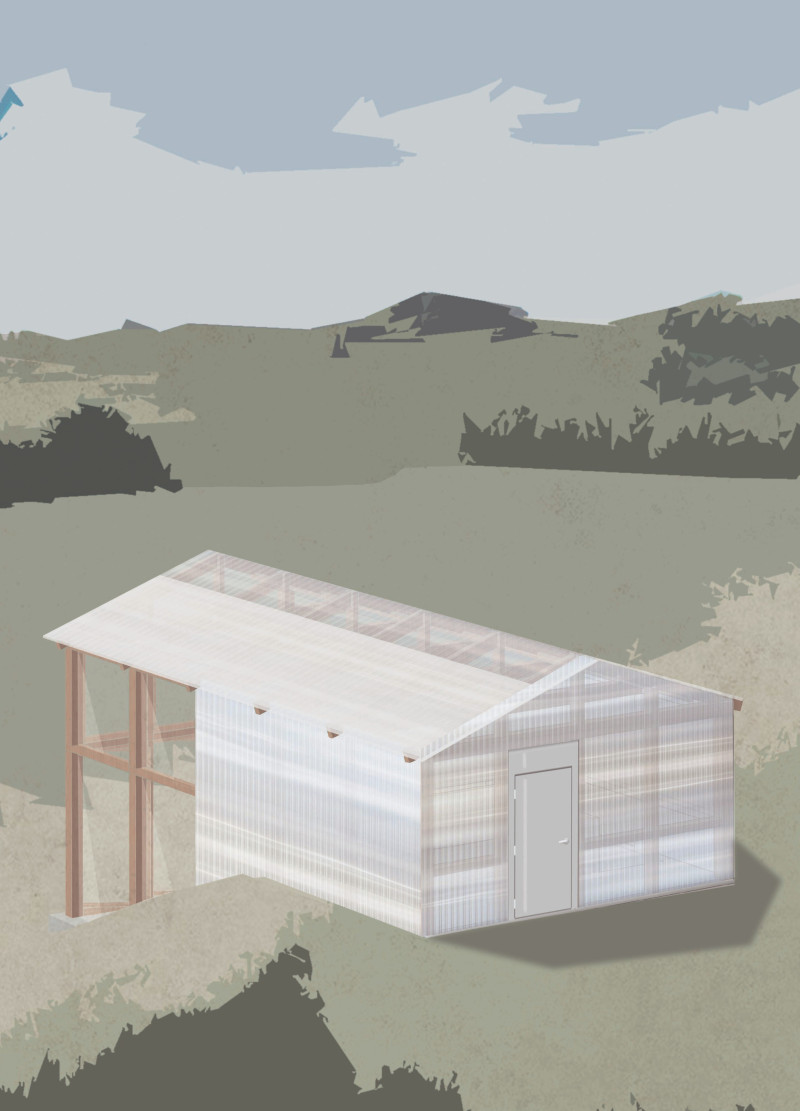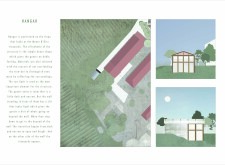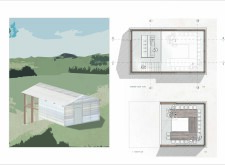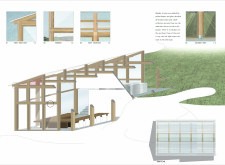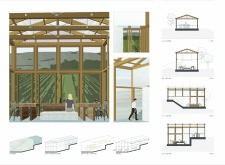5 key facts about this project
Hangar is an architectural intervention located on a slope that offers expansive views of the Monte D'Oiro vineyards. The design fosters a connection with the environment, where the structure's form is inspired by a simple house silhouette. This approach creates an inviting atmosphere for guests, promoting comfort and familiarity in the experience of the space.
Spatial Experience
- Upon entering Hangar, guests find themselves in a narrow, dimly lit room. This design choice stands in contrast to the bright, open area that lies beyond. A wall with a light slit allows natural daylight to flow into the interior, providing a glimpse of the outside while guiding visitors toward the scenic vistas of the vineyards. The transition from dark to light fosters a sense of anticipation and discovery.
Use of Natural Light
- Natural light serves as an important element throughout the building. It enhances the spatial experience, creating an engaging narrative as one moves through the different areas. The shift from the dark entrance to the sunlit room reveals the beauty of the surroundings, reinforcing the bond between the building and its landscape.
Materiality
- The project features a selection of materials that reinforce its architectural character. A wooden framework, along with polycarbonate and glass, creates a relationship with the natural environment. Metal joints provide stability and clarity in connections, while a half-reflective concrete floor enhances the light play within the space. Additionally, a red glass panel on the southwest face of the roof allows soft red light to enter in the afternoon, subtly altering the room's ambiance.
Architectural Harmony
- Hangar reflects a thoughtful approach to its design, where the simplicity of form and careful use of light interact with the landscape. The integration of the structure with its surrounding environment is clear, emphasizing a modern understanding of how architecture can respond to nature. The engaging atmosphere invites appreciation and exploration, making the relationship between the building and its context a fundamental aspect of the experience.


